Slicing through the murky waters of South Asian rivers, the gharial stands as one of nature’s most distinctive yet critically endangered creatures. With their needle-thin snouts and impressive size, these ancient reptiles have navigated Earth’s waterways for millions of years, surviving what dinosaurs could not. Despite their fearsome appearance, gharials remain widely misunderstood, often feared unnecessarily, and pushed to the brink of extinction through human activities. These remarkable crocodilians represent a unique evolutionary branch that has adapted specifically to aquatic environments, creating a specialized predator unlike any other reptile on our planet. As their numbers dwindle to dangerously low levels, understanding these river giants becomes increasingly urgent for their conservation and appreciation.
Ancient Origins: The Evolutionary Journey of Gharials
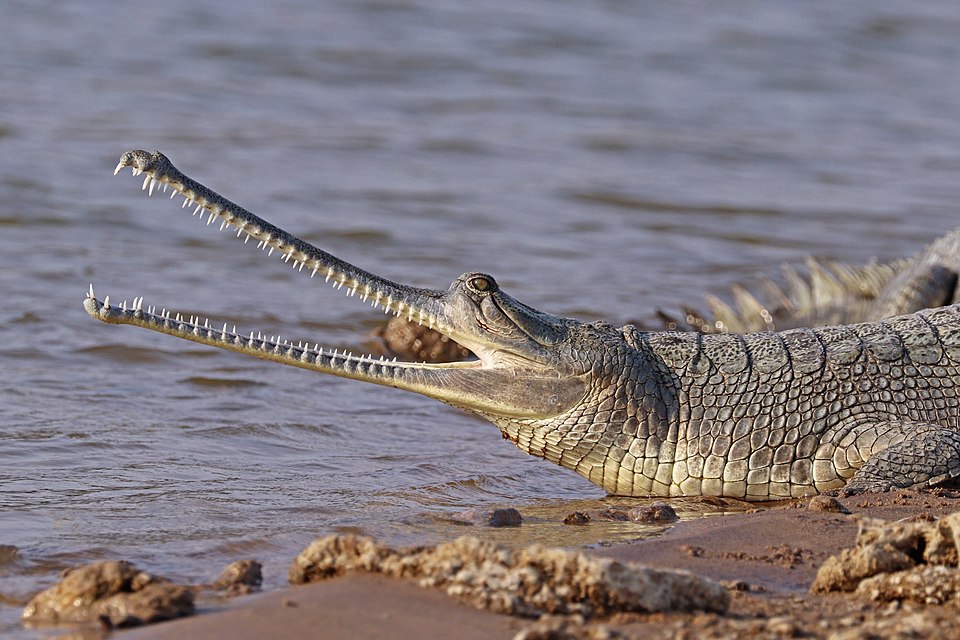
Gharials (Gavialis gangeticus) belong to the Gavialidae family, an ancient lineage that diverged from other crocodilians approximately 70 million years ago during the Late Cretaceous period. This remarkable evolutionary history makes them living fossils, having survived the mass extinction event that eliminated dinosaurs and countless other species. Fossil evidence reveals that gharial ancestors once inhabited rivers across Asia, Europe, and North America, showing a much wider distribution than their current restricted range. Their distinctive morphology—particularly the extremely narrow snout—has remained remarkably consistent through millions of years, demonstrating a highly successful adaptation to their specialized fishing lifestyle. Understanding this ancient lineage helps explain why gharials are so uniquely adapted to their ecological niche and why they struggle to adapt to environmental changes.
Unmistakable Appearance: The Gharial’s Distinctive Features
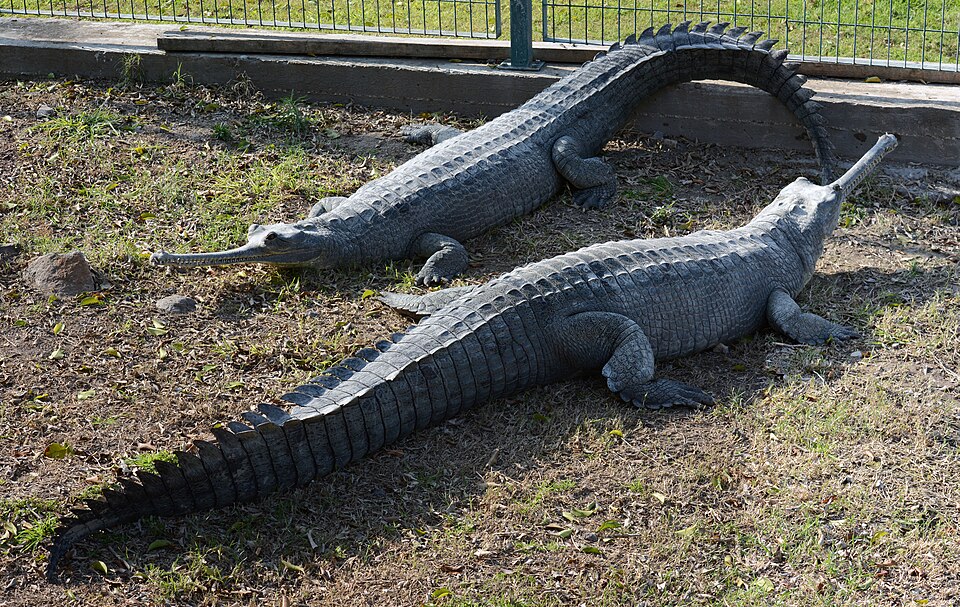
The gharial’s most striking feature is undoubtedly its extraordinarily long, narrow snout lined with 110-120 interlocking teeth—perfect tools for capturing slippery fish in fast-moving waters. Adult males develop a distinctive bulbous growth on the tip of their snout called a “ghara” (the Hindi word for “pot”), which gives the species its name and serves as a visual display and resonating chamber during mating calls. Growing up to 20 feet (6 meters) in length, gharials rank among the largest crocodilians in the world, with males typically reaching larger sizes than females. Unlike other crocodilians, their legs are relatively weak, making them awkward on land but exceptionally agile swimmers, with powerful laterally flattened tails that propel them swiftly through river currents. Their olive-brown coloration provides perfect camouflage in murky river environments, while their raised eyes and nostrils allow them to remain nearly invisible while scanning for prey.
River Specialists: The Gharial’s Aquatic Adaptations
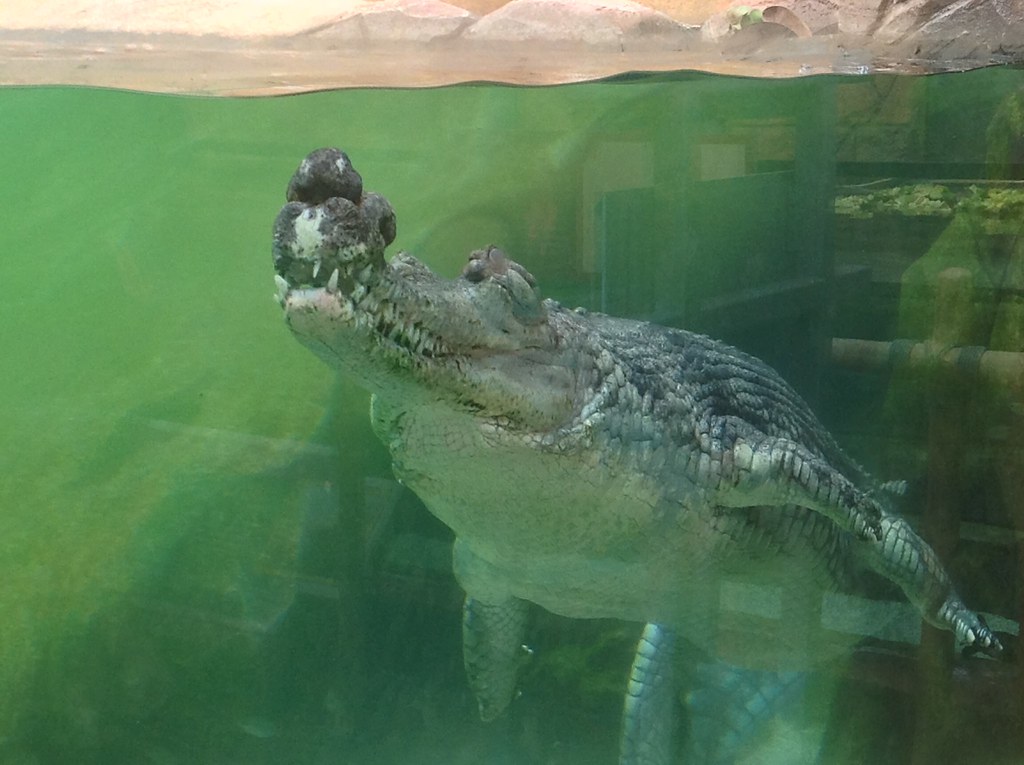
Gharials represent the most aquatically adapted of all crocodilians, with a body evolved specifically for life in deep, fast-flowing rivers. Their streamlined form and powerful tails allow them to move effortlessly through water, while their slender snouts create minimal resistance when hunting. Unlike their crocodile and alligator cousins that can easily walk on land, gharials’ weak legs and specialized physiology limit their terrestrial movement to awkward belly-sliding, essentially confining them to aquatic environments except during nesting season. Their specialized dentition—numerous sharp, interlocking teeth—is perfectly designed for capturing fish rather than tearing larger prey like mammals. This extreme specialization makes gharials supremely efficient in their ecological niche but also renders them particularly vulnerable to habitat disruption, as they cannot easily adapt to alternative environments or food sources when their specialized habitat is compromised.
Fishing Experts: Hunting Techniques and Diet
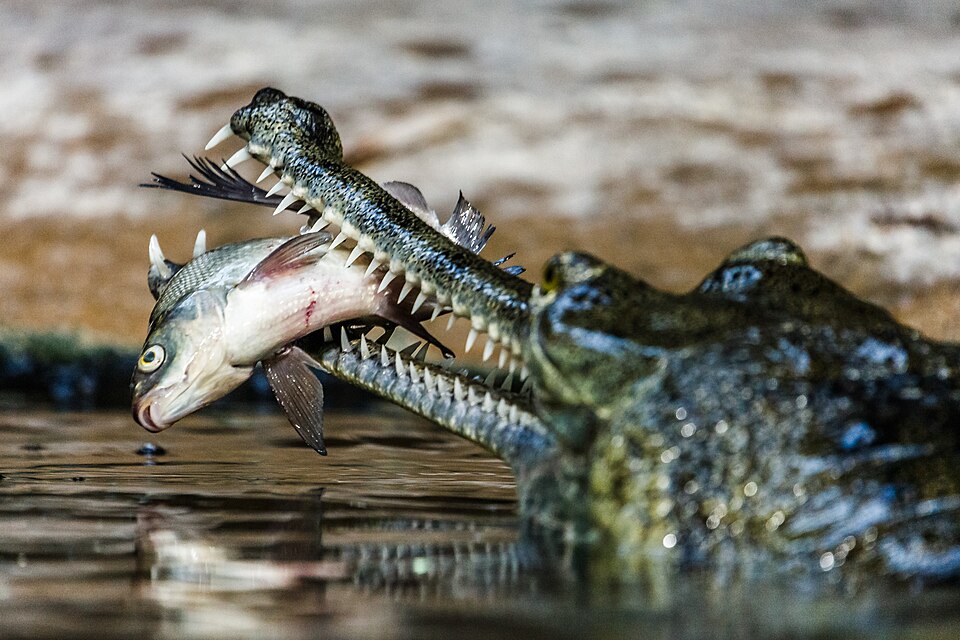
Gharials have perfected the art of fishing through millions of years of evolution, employing a distinctive hunting technique that differs markedly from other crocodilians. They typically hunt by floating motionless with only their eyes and nostrils above water, using their excellent underwater vision to detect the movement of fish. When prey approaches, the gharial executes a lightning-fast sideways sweep of its narrow jaws, using its numerous needle-like teeth to trap rather than crush fish. Their diet consists almost exclusively of fish, with occasional consumption of crustaceans and small water animals, making them true piscivores unlike most other crocodilians that have broader diets. Young gharials start with smaller prey like insects and tiny fish before graduating to larger fish species as they grow. This dietary specialization makes them particularly vulnerable to fish population declines caused by overfishing or river pollution.
Gentle Giants: Debunking Myths About Gharial Aggression
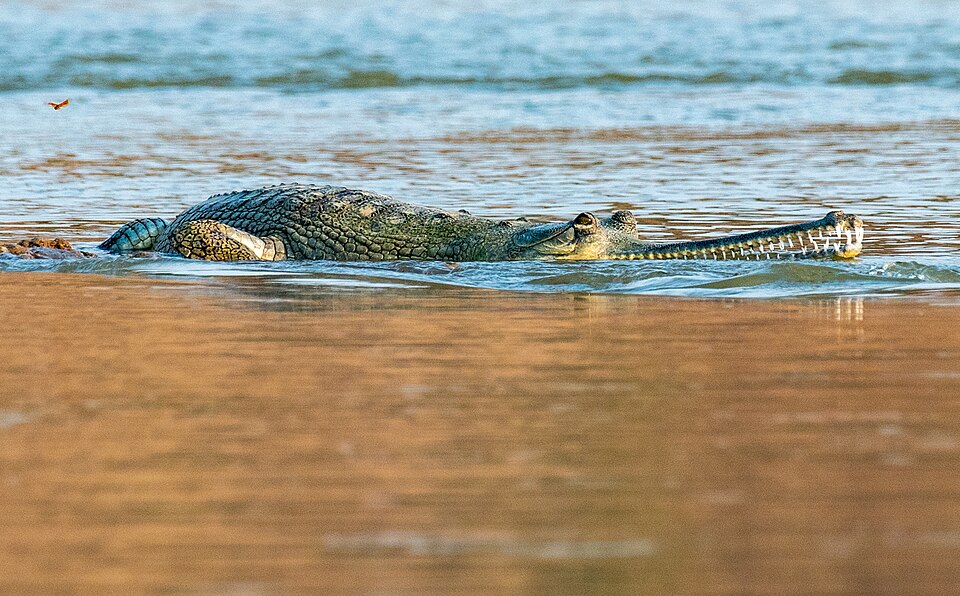
Despite their intimidating appearance and relation to crocodiles, gharials rank among the least aggressive large predators toward humans. Their specialized thin snouts and needle-like teeth are perfectly adapted for catching fish but are poorly suited for attacking larger prey like humans or livestock. There are virtually no confirmed reports of unprovoked gharial attacks on people, making them considerably safer to be around than crocodiles or alligators. Their physical limitations on land further reduce any potential threat, as they cannot effectively chase prey outside of water. This non-aggressive nature has unfortunately contributed to their vulnerability, as they rarely defend themselves aggressively when captured by humans for trade or killing. Conservation education efforts increasingly focus on dispelling the harmful myths about gharial aggression that have contributed to fear-based killings of these harmless fish-eaters.
Communal Creatures: Social Behavior and Communication
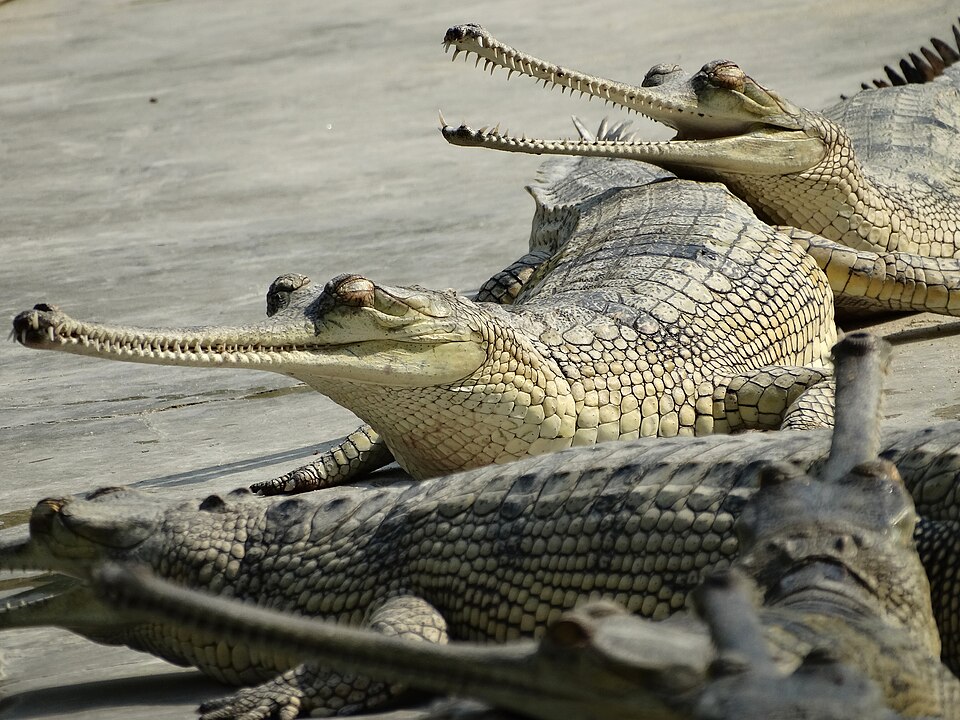
Contrary to the solitary reputation of many reptiles, gharials often demonstrate complex social behaviors, particularly during breeding seasons when they form impressive aggregations. Dominant males may preside over harems of females during breeding periods, defending prime basking and nesting territories through impressive displays that include water slapping, head raising, and the use of infrasonic sounds produced by their distinctive ghara. Researchers have observed gharials basking in groups on sandbars, suggesting they may derive social or thermoregulatory benefits from group behavior. Females demonstrate remarkable maternal instinct, guarding their nests vigilantly during the incubation period and responding to the calls of hatchlings by helping them reach water safely. These social complexities challenge simplistic views of reptilian behavior and highlight the sophisticated adaptations that have helped gharials survive for millions of years.
Reproductive Rituals: The Gharial’s Breeding Cycle
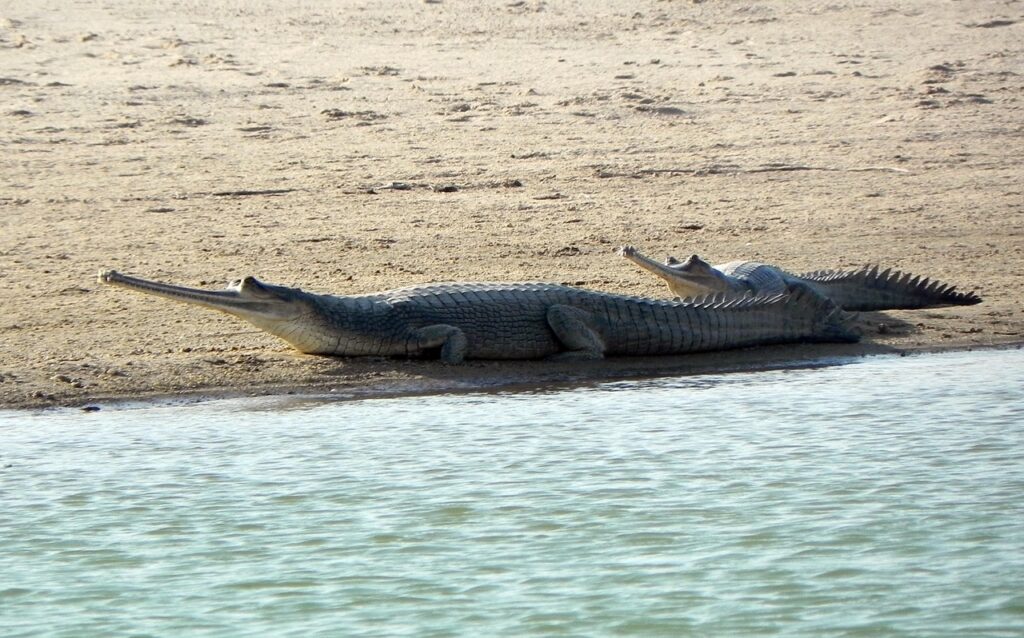
The reproductive cycle of gharials follows the seasonal rhythms of their river habitats, with courtship typically beginning in the late winter months as water levels recede and sandbanks emerge. Male gharials employ their ghara prominently during mating displays, producing distinctive buzzing sounds and releasing bubbles while swimming in circles around receptive females. Female gharials are among the most prolific egg-layers of all crocodilians, digging deep nests in sandy beaches where they deposit between 20-95 eggs—an evolutionary strategy that once helped ensure population survival despite high predation on eggs and hatchlings. After approximately 70 days of incubation, the synchronized hatching creates a rush of tiny gharials (measuring only 15-17 inches at birth) making their way to water, often assisted by the attentive mother. This reproductive strategy evolved during times of abundant habitat, but now faces significant challenges as suitable nesting beaches diminish and human disturbances increase.
Critically Endangered: The Gharial Conservation Crisis
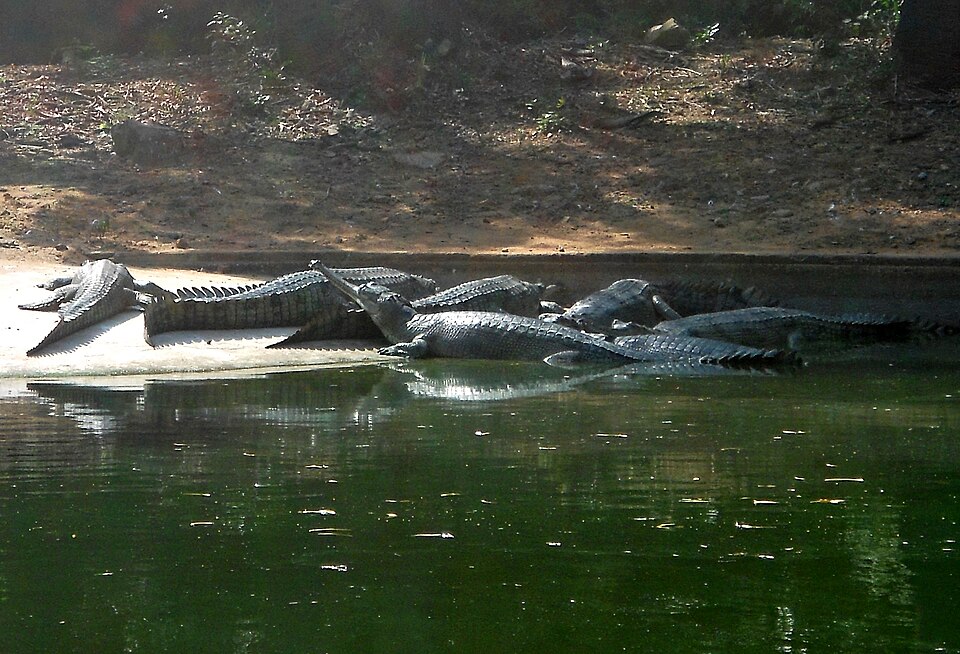
The International Union for Conservation of Nature (IUCN) classifies gharials as Critically Endangered, with population declines exceeding 80% over three generations. From historical populations estimated in the tens of thousands spread across seven countries, today fewer than 1,000 adult breeding gharials remain in the wild, primarily restricted to small pockets of India and Nepal. Their dramatic decline represents one of the most severe population crashes of any large vertebrate in recent decades, driven by a perfect storm of threats including habitat loss, fishing net entanglement, river pollution, and poaching. The species’ highly specialized nature makes recovery particularly challenging, as they require specific river conditions with deep pools, fast-flowing water, and undisturbed sandbanks for successful breeding. Their predicament symbolizes the broader crisis facing freshwater ecosystems worldwide, which are experiencing biodiversity declines far exceeding those in terrestrial environments.
Human Impacts: The Major Threats to Gharial Survival

The precipitous decline of gharial populations stems directly from human activities that have transformed their river habitats beyond recognition in just a few generations. Dam construction has fundamentally altered river flow patterns, eliminating the seasonal fluctuations that created sandbars essential for gharial nesting and disrupting fish migration patterns critical to their food supply. Widespread sand mining for construction destroys nesting beaches, while agricultural and industrial pollution poisons their aquatic habitats with pesticides, heavy metals, and other contaminants. Entanglement in fishing nets represents a major mortality factor, with gharials particularly vulnerable due to their snout shape which easily becomes caught in mesh. Historically, gharials were also targeted for their skin and for use in traditional medicine, though direct hunting has decreased with greater protection and reduced populations. The combination of these pressures on a highly specialized species has proven catastrophic, requiring comprehensive conservation approaches to address multiple threat factors simultaneously.
Conservation Heroes: Efforts to Save the Gharial
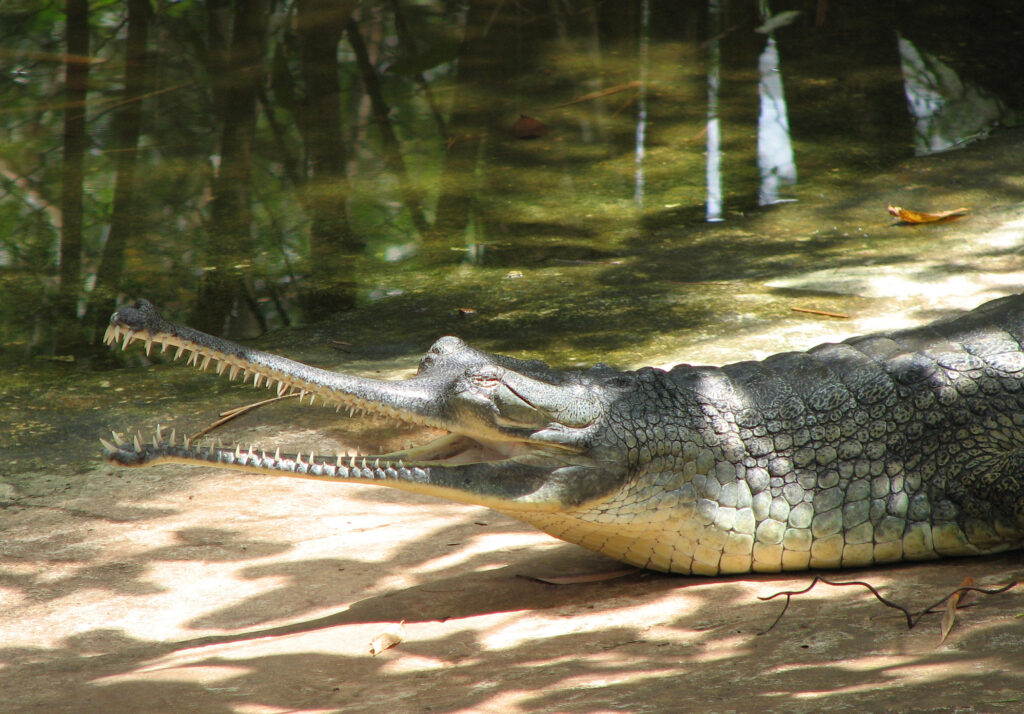
Against seemingly overwhelming odds, dedicated conservationists across South Asia are fighting to preserve gharials through innovative recovery programs. The centerpiece of these efforts involves captive breeding and reintroduction initiatives, with facilities in India and Nepal successfully hatching and raising thousands of gharials for release into protected river sections. Organizations like the Gharial Conservation Alliance coordinate international expertise and resources, while community education programs work to transform local attitudes from fear to pride in this unique natural heritage. Several protected areas have been established specifically for gharial conservation, including India’s National Chambal Sanctuary and Nepal’s Chitwan National Park, which provide critical safe havens where hunting and disruptive fishing practices are prohibited. Recent successes include the discovery of previously unknown breeding populations and evidence of natural reproduction from reintroduced individuals, offering rare glimmers of hope for this ancient species teetering on the edge of extinction.
Ecological Importance: The Gharial’s Role in River Ecosystems
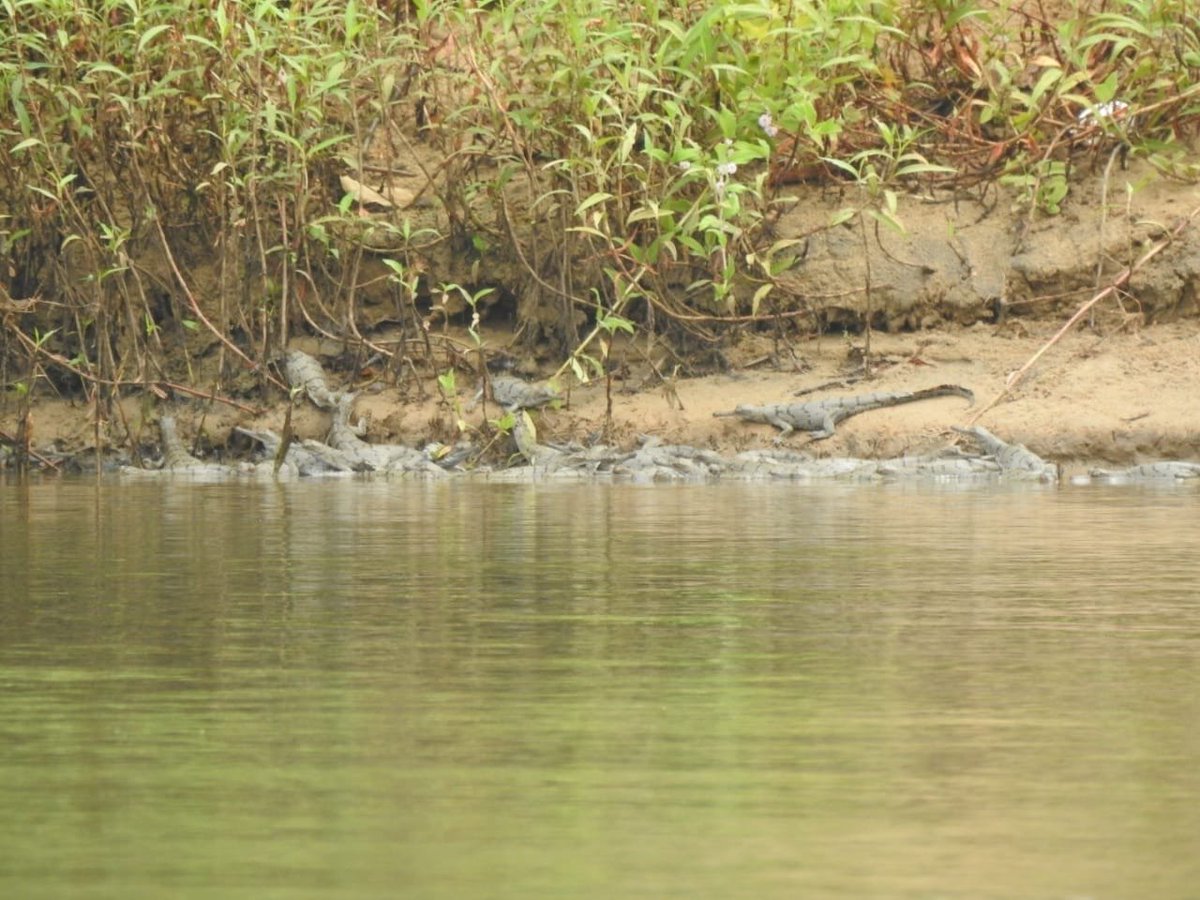
As apex predators in their aquatic ecosystems, gharials play a crucial regulatory role that extends far beyond their direct predation on fish populations. Their presence helps maintain healthy fish communities by primarily targeting weak or diseased individuals, effectively strengthening fish gene pools through natural selection. Gharial nesting activities physically alter riverbank environments, creating microhabitats that benefit numerous other species including turtles and small vertebrates. Their large bodies also serve as nutrient transporters between aquatic and terrestrial environments, particularly through their excrement which deposits aquatic-derived nutrients on sandbanks. Young gharials themselves provide food for various predators, forming an important link in the food web. Conservation biologists increasingly recognize that protecting gharials effectively shields entire river ecosystems, making them a true “umbrella species” whose preservation benefits countless other organisms sharing their habitat.
Living Alongside Leviathans: Community-Based Conservation
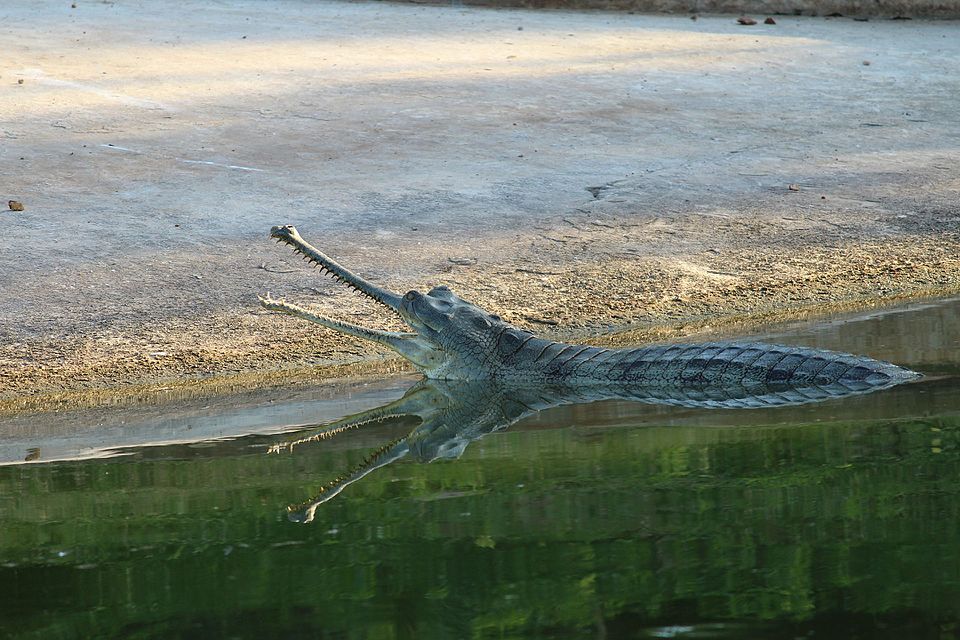
The future of gharial conservation increasingly depends on the active participation of local communities who share the riverbanks with these ancient reptiles. Innovative programs now engage riverside villages as conservation partners, training local fishermen as gharial monitors and providing alternative livelihoods to reduce fishing pressure in critical gharial habitats. Ecotourism initiatives centered around gharial viewing create economic incentives for protection, transforming the species from perceived nuisance to valuable asset in the eyes of local communities. Religious and cultural connections to rivers in South Asian traditions are being leveraged to promote gharial conservation, with some temples and religious leaders advocating for river protection as a spiritual responsibility. The success stories emerging from these community-based approaches demonstrate that conservation can simultaneously benefit wildlife and people when local knowledge and needs are respected and integrated into protection strategies.
Future Prospects: Can Gharials Survive the 21st Century?
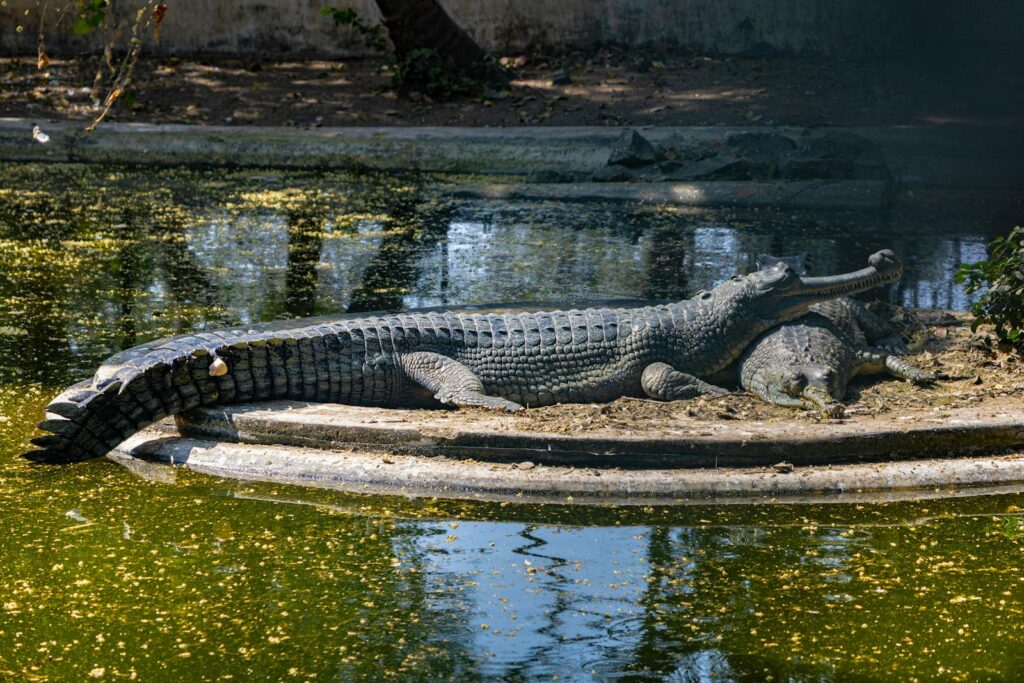
The survival of gharials through this century represents one of conservation’s most significant challenges, balancing precariously between promising successes and continuing threats. Climate change introduces new uncertainties, potentially altering river flow patterns, water temperatures, and sand quality that could impact gharial breeding success. Genetic bottlenecks from severely reduced populations raise concerns about long-term viability, though recent genetic studies suggest sufficient diversity remains if populations can expand. Technological innovations offer new conservation tools, including satellite tracking of released individuals, environmental DNA sampling to detect gharial presence, and drone monitoring of remote nesting beaches. The growing recognition of healthy rivers as essential for human well-being creates potential allies for gharial conservation, as clean water advocates and sustainable development proponents increasingly align with wildlife protection goals. While their future remains uncertain, the gharial’s remarkable resilience through millions of years of evolution provides hope that with sufficient human commitment, these living fossils might yet navigate their way to recovery.
From their prehistoric origins to their precarious present, gharials embody both the remarkable adaptability of life on Earth and its vulnerability to human impact. These river specialists, with their distinctive appearance and gentle nature, have survived for millions of years by perfecting their ecological niche, only to face their greatest challenge from human transformation of their watery domain. As we work to protect these misunderstood giants of Asian rivers, we’re not just preserving a unique species but honoring an evolutionary lineage that predates human existence and safeguarding the health of river systems vital to both wildlife and people. The gharial’s story is still being written, and whether it ends in extinction or recovery depends largely on our collective willingness to share Earth’s rivers with these remarkable living fossils.


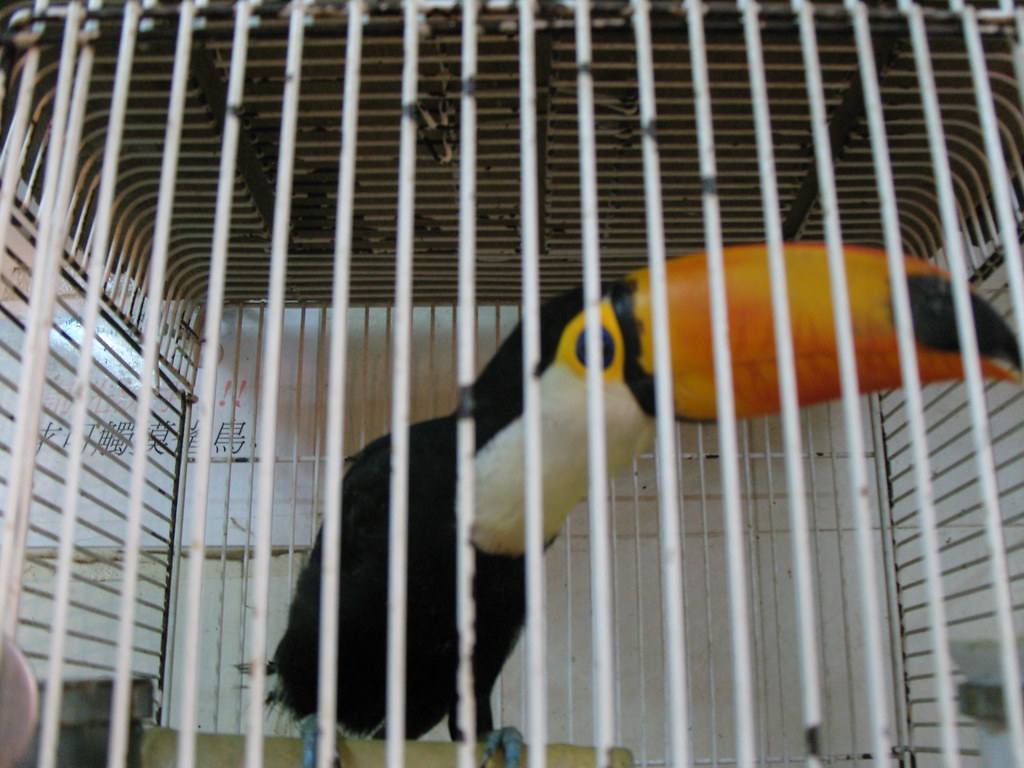
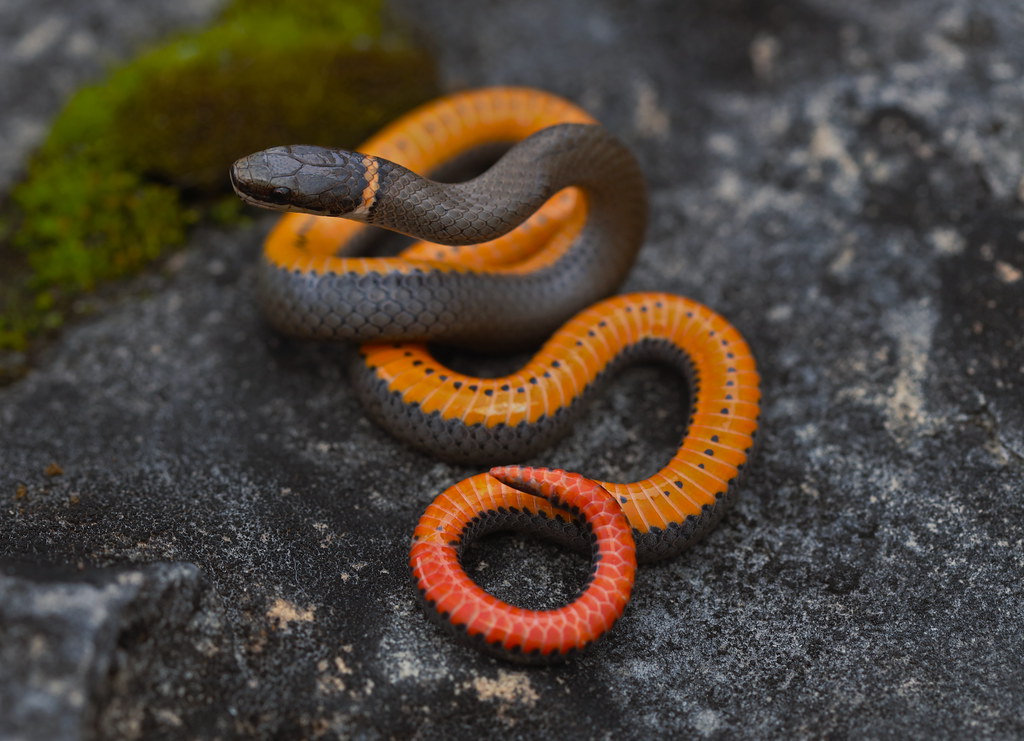
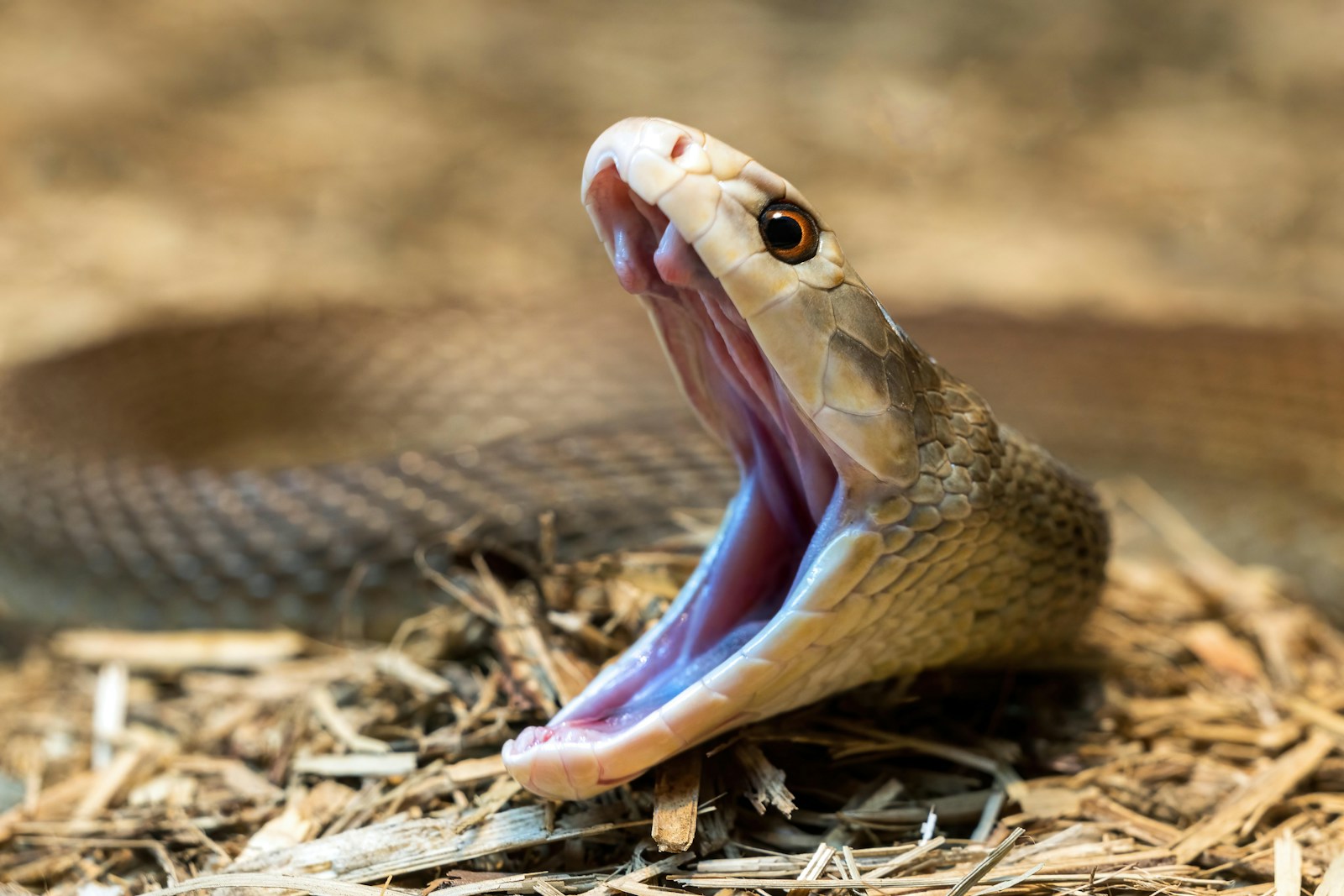
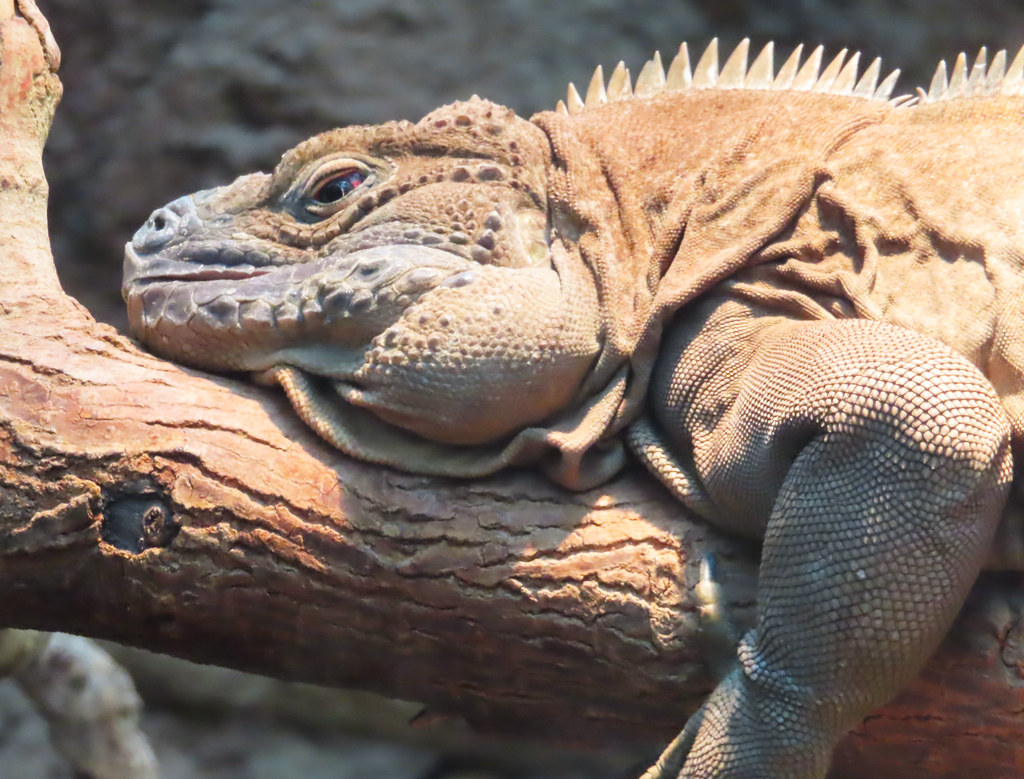

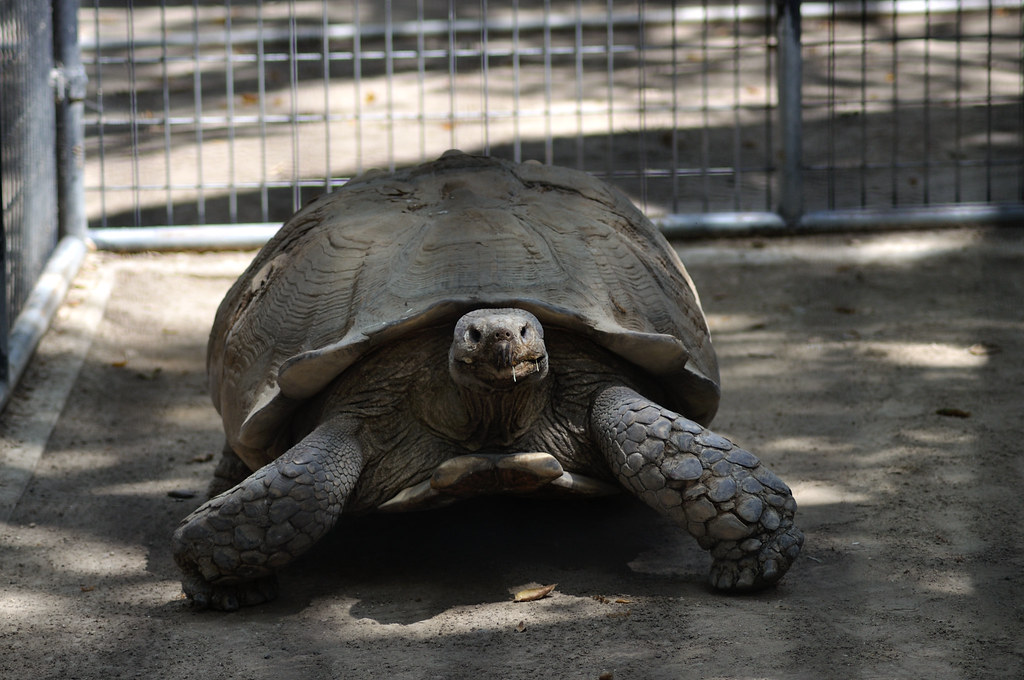
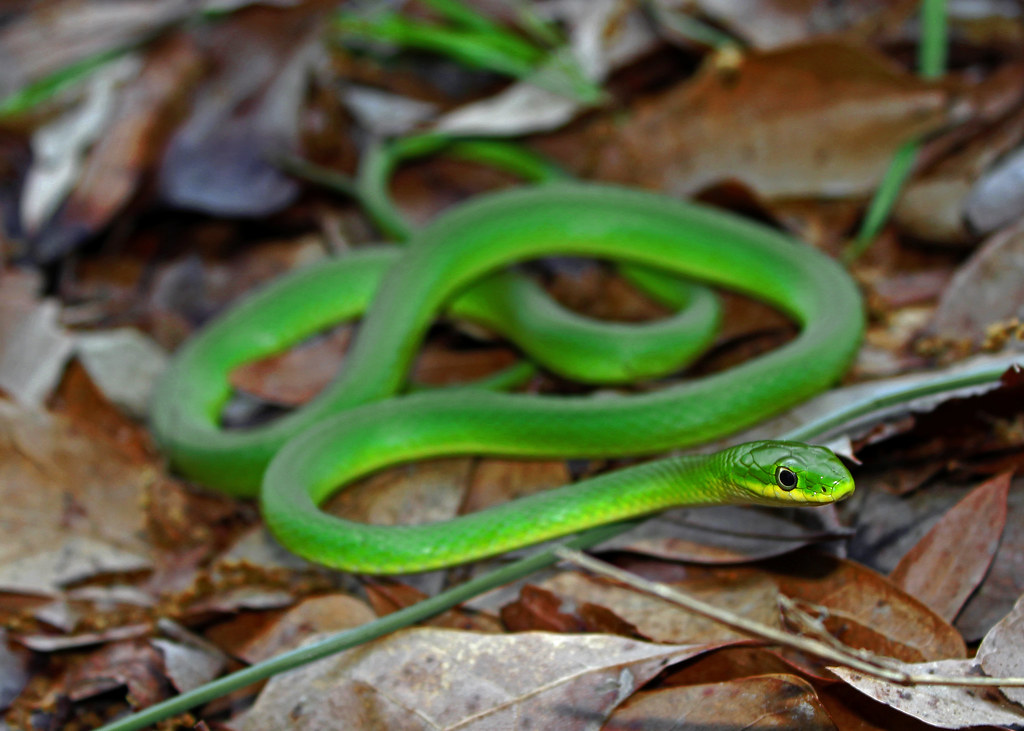
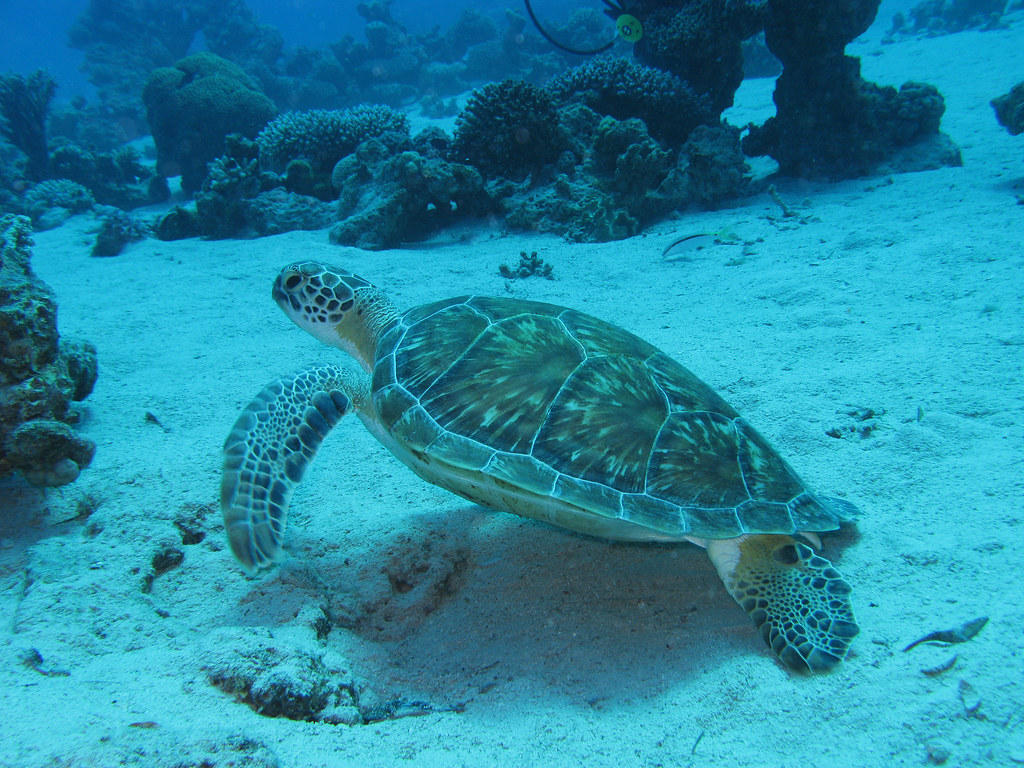




Leave a Reply